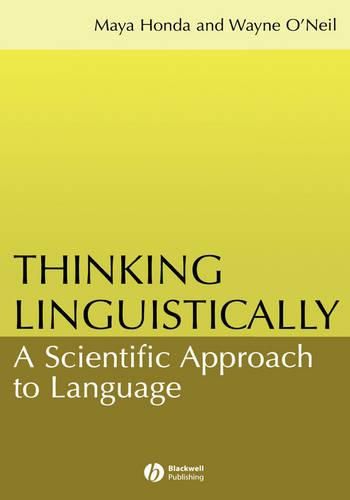Readings Newsletter
Become a Readings Member to make your shopping experience even easier.
Sign in or sign up for free!
You’re not far away from qualifying for FREE standard shipping within Australia
You’ve qualified for FREE standard shipping within Australia
The cart is loading…






Thinking Linguistically is a unique and clearly written introduction to the nature of linguistic analysis and issues in language acquisition. The book is for undergraduate and graduate students in linguistics, education, and psychology. Through twenty problem sets, based in languages not only from the Americas but from other continents as well, Thinking Linguistically: * Initiates students to the linguists’ way of observing and analyzing data by making the methods and the process of inquiry visible and accessible. * Engages students in analyzing the breadth and depth of two phenomena in a variety of languages-the expression of noun phrase plurality and the formation of questions. * Integrates analysis of these phenomena with results from first and second language acquisition research. * Emphasizes the interface between phonology, morphology, syntax, and semantics. * Exemplifies how linguistic analysis can be used for the teaching of critical thinking, problem solving, and the nature of scientific inquiry in general. * Is ideal for future language teachers for understanding acquisition and linguistic phenomena
$9.00 standard shipping within Australia
FREE standard shipping within Australia for orders over $100.00
Express & International shipping calculated at checkout
Thinking Linguistically is a unique and clearly written introduction to the nature of linguistic analysis and issues in language acquisition. The book is for undergraduate and graduate students in linguistics, education, and psychology. Through twenty problem sets, based in languages not only from the Americas but from other continents as well, Thinking Linguistically: * Initiates students to the linguists’ way of observing and analyzing data by making the methods and the process of inquiry visible and accessible. * Engages students in analyzing the breadth and depth of two phenomena in a variety of languages-the expression of noun phrase plurality and the formation of questions. * Integrates analysis of these phenomena with results from first and second language acquisition research. * Emphasizes the interface between phonology, morphology, syntax, and semantics. * Exemplifies how linguistic analysis can be used for the teaching of critical thinking, problem solving, and the nature of scientific inquiry in general. * Is ideal for future language teachers for understanding acquisition and linguistic phenomena